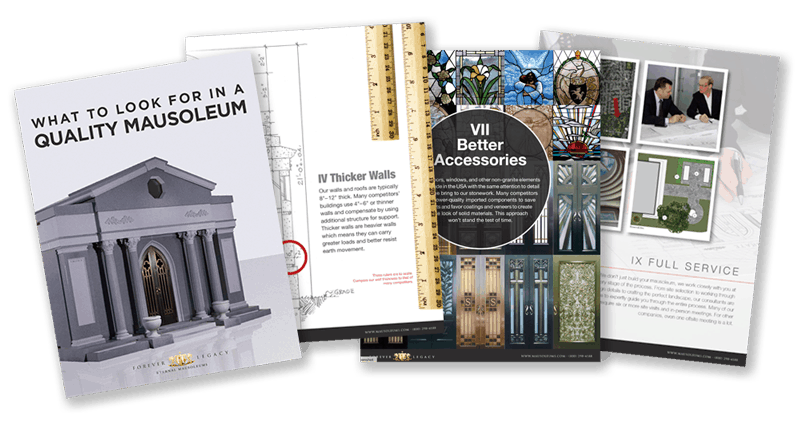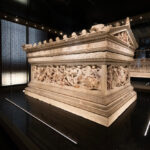Pierrepont Catafalque
Open Air
This Gothic Revival catafalque, carved out of sandstone, is the last resting place for a number of members of the Henry Evelyn Pierrepont family. Henry Pierrepont was the son of a wealthy Brooklyn landowner and gin distiller. In 1835, the task fell upon Henry to lay out the streets for the newly incorporated city of Brooklyn. His design included 11 parks, and land set aside for the development of a cemetery to be modeled after Père-Lachaise cemetery, in Paris.
As things evolved, Green-Wood Cemetery, which was dedicated on April 11, 1838, was modeled after Cambridge’s Mount Auburn Cemetery (which itself was modeled after Père-Lachaise). During the decade after its dedication, additional land was purchased until Green-Wood reached its present size of 478 acres, three times that of Mount Auburn. In 1849, noted landscape architect A.J. Downing proclaimed, “Judging from the crowds of people in carriages and on foot I found constantly thronging Green-Wood and Mount Auburn, I think it is plain enough how much our citizens of all classes would enjoy public parks on a similar scale.” It was, in fact, the popularity of Green-Wood Cemetery that led to the establishment of New York City’s Central Park in 1856.
The design of the Pierrepont catafalque has been attributed to Richard Upjohn and his son Richard Mitchell Upjohn. Pierrepont had also commissioned the father/son team to design the Gothic Revival entrance to Green-Wood cemetery.
Photos and text © Douglas Keister Visit Doug’s Author Page
[address cemetery=”Green-Wood Cemetery” street=”Willow Avenue” city=”Brooklyn” state=”New York” zip=”11218″]

